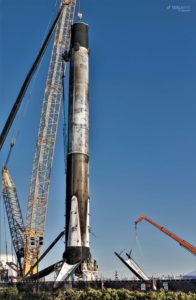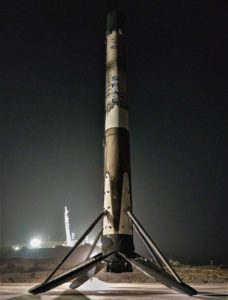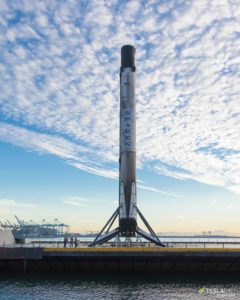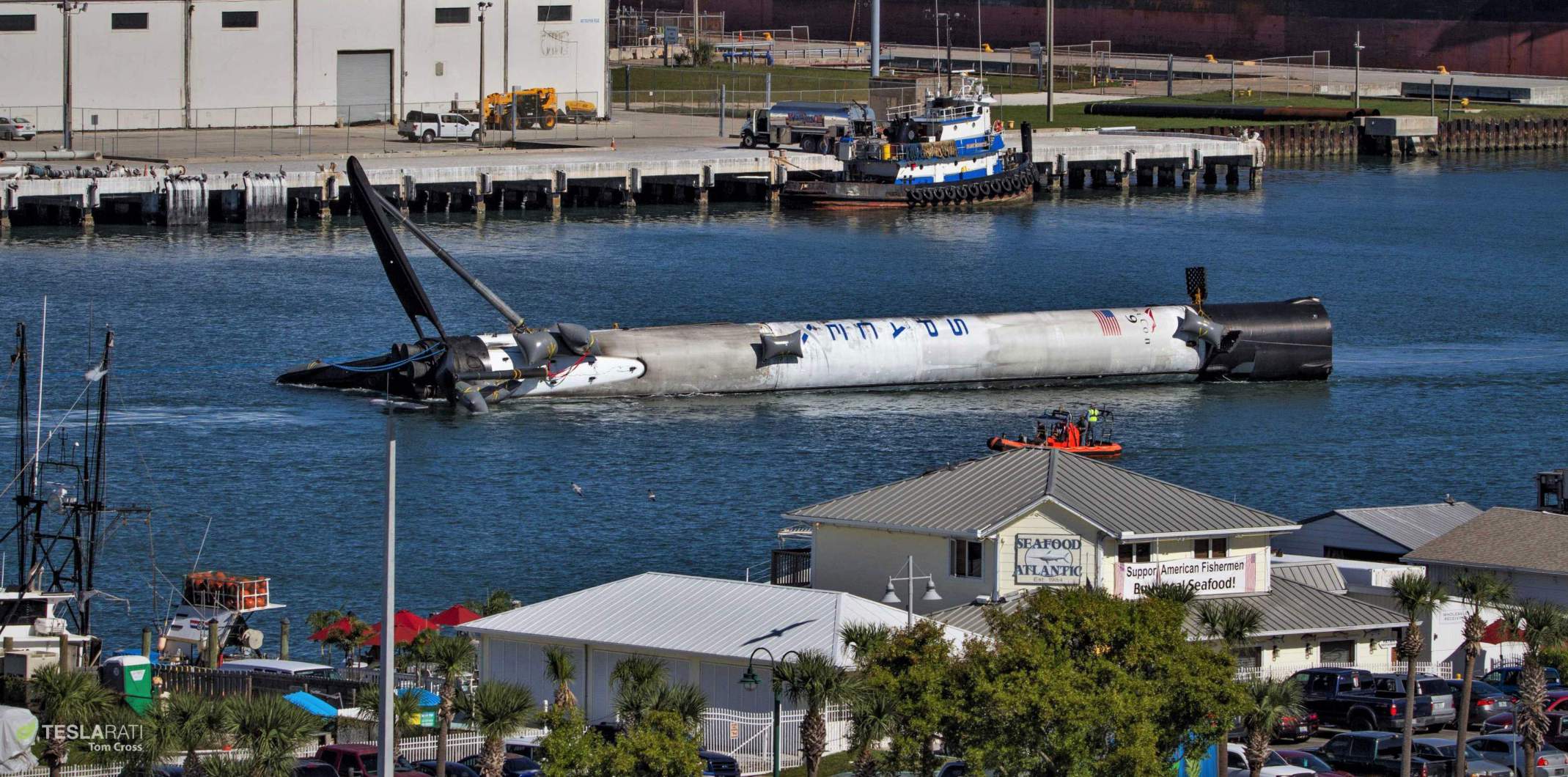
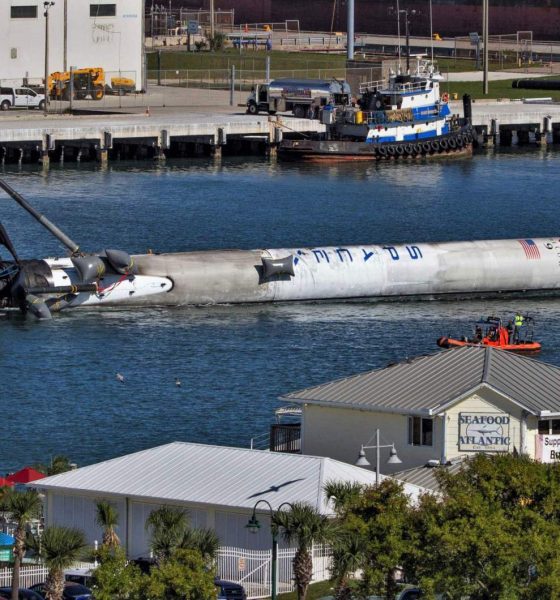
News
SpaceX’s partial Falcon 9 landing failure could delay next West Coast launch
According to statements made by the Canadian Space Agency (CSA) and media outlet CBC, the launch of the agency’s next-generation Radarsat Constellation Mission (RCM) – a trio of Earth observation satellites weighing >4200 kg (9300 lbs) – has been “postponed … indefinitely” as a consequence of SpaceX’s first failed Falcon 9 booster landing since 2016.
Offering a rare glimpse into some of the extensive planning that goes on behind the scenes to make commercial rocket launches happen, CSA has indicated that the booster it planned to launch on – Falcon 9 B1050 – suffered an untimely (partial) demise during a recovery attempt shortly after successfully launching the CRS-16 Cargo Dragon mission on December 5th, 2018. While the booster shockingly was returned to dry land mostly intact after landing in the Atlantic, SpaceX and CSA must now settle on a different Falcon 9 to launch the mission.
A problem with a SpaceX booster rocket has postponed the launch of a $1 billion Canadian satellite program indefinitely. https://t.co/45qirdId5j @DeanBeeby
— CBC News (@CBCNews) January 15, 2019
Goldilocks and the Falcon boosters
While it doesn’t look like there are only three possible rocket options for the Radarsat constellation and SpaceX to choose from, the situation of picking a new booster this late in the launch flow is far less simple than it might initially seem. First and foremost, SpaceX likely needs to do its best to accommodate the preferences of customers CSA and MDA (MacDonald, Dettwiler and Associates Ltd.) regardless of how disruptive they may be. Originally targeted for sometime in November 2018, RCM’s launch slipped several months to the second half of February 2019 due to what CSA described as “higher priority missions [for]the US Government and a backlog of launches from…Vandenberg” late last year.
While that alone does not point directly towards any obvious explanations, CBC reporter Dean Beeby’s implication that the mission’s launch is now “postponed…indefinitely” offers a hint of an answer, although it could also be manufactured hyperbole where there actually is none. If CSA actually indicated that the launch is now postponed indefinitely, the only clear explanation for a launch delay greater than a month or so as a result of Falcon 9 B1050’s unplanned unavailability would lie in some unique aspect of that particular Falcon 9 booster.
Although each rocket SpaceX builds can be quite different from each other in terms of general quirks and bugs, the only obvious difference between B1050 and any other flight-proven Falcon 9 booster in SpaceX’s fleet was its low-energy CRS-16 trajectory, something that would have enabled a uniquely gentle reentry and landing shortly after launch. In other words, likely out of heaps of caution and conservatism if it is the case, customers CSA and MDA may have requested (or contractually demanded) that SpaceX launch the Radarsat constellation on a flight-proven Falcon 9 with as little wear and tear as possible, in which case B1050 would have been hard to beat.
“Unfortunately, the landing of [Falcon 9 B1050] was unsuccessful, preventing SpaceX from recuperating the reusable components for the launch of RCM. We continue to work closely with MDA and SpaceX to confirm a launch date for RCM.” – Spokesperson Audrey Barbier, Canadian Space Agency (CSA), 01/15/2019
If the customers remained steadfast in their (speculated) request for a gently-used flight-proven Falcon 9 even after B1050’s partial landing failure, the next most comparable booster would be Falcon 9 B1051 after launching the first orbital Crew Dragon mission sometime no earlier than (NET) February 2019. Aside from B1051, there will be no obvious booster alternative available for at least several months after Crew Dragon’s launch debut, unless NASA requests that its next contracted Cargo Dragon mission (CRS-17) launch on a new Falcon 9 rocket in March 2019.
Engines stabilized rocket spin just in time, enabling an intact landing in water! Ships en route to rescue Falcon. pic.twitter.com/O3h8eCgGJ7
— Elon Musk (@elonmusk) December 5, 2018
Warmer…
If a less lightly-used booster becomes an option for CSA/MDA, there are immediately multiple clear options available as long as SpaceX is will to accept possible delays to subsequent launches to quickly reassign a flight-proven Falcon 9. Falcon 9 B1046 – the first SpaceX rocket ever to launch three orbital-class missions – is being refurbished at SpaceX’s Hawthorne, California facilities a few hundred miles south of Vandenberg. B1047 completed its second successful launch in November 2018 and is being refurbished – along with the twice-flown B1048 – in Cape Canaveral, Florida. Finally, Falcon 9 B1049 completed its second successful launch just days ago (January 11th) and is being processed off of drone ship Just Read The Instructions (JRTI) at this very moment.
B1047 or B1048 have likely been assigned to the imminent NET February 18th launch of Indonesian commsat PSN-6 and SpaceIL’s Beresheet Moon lander, meaning that the best possible option for Radarsat – short of swallowing months of additional delays – is a decision between B1047/B1048 or B1046, with B1049 also a candidate if a slip into March or April is an option. Still, all of those options would require Canada and MDA to fly on a Falcon 9’s third (or fourth) launch, perhaps an unacceptable compromise or perceived risk for certain customers.
- Falcon 9 B1046 is processed in Port of LA shortly after its third successful launch and landing, December 2018. (Pauline Acalin)
- Falcon 9 B1047 is pictured here beneath an upper stage and satellite Es’hail-2 prior to its second launch. (Tom Cross)
- Falcon 9 B1048 landed at LZ-4 after its second launch and is now being refurbished on the opposite coast. (SpaceX)
Meanwhile, schedule pressures have meant that SpaceX is pushing as hard as possible to prepare three new Block 5 Falcon Heavy boosters for the giant rocket’s second and third launches, scheduled as early as March and April 2019. While unconfirmed, it appears that SpaceX may have chosen to manufacture all three of those boosters one after the other, meaning that the company’s Hawthorne factory would have been primarily focused on delivering those rockets for at least 2-3 months start to finish. In short, it does not appear that there is or will be an unflown Falcon 9 booster available for Radarsat anytime soon.
Whether the customers wait for a new booster to be produced, wait for Crew Dragon’s first launch to wrap up, or accept being the third or fourth launch of a well-scorched Falcon 9, RCM’s next published launch target should offer a hint as to how CSA, MDA, and SpaceX ultimately decided to respond to Falcon 9 B1050’s dip in the Atlantic OCean.

Elon Musk
GM CEO Mary Barra says she told Biden to give Tesla and Musk EV credit
“He was crediting me, and I said, ‘Actually, I think a lot of that credit goes to Elon and Tesla…You know me, Andrew. I don’t want to take credit for things.”
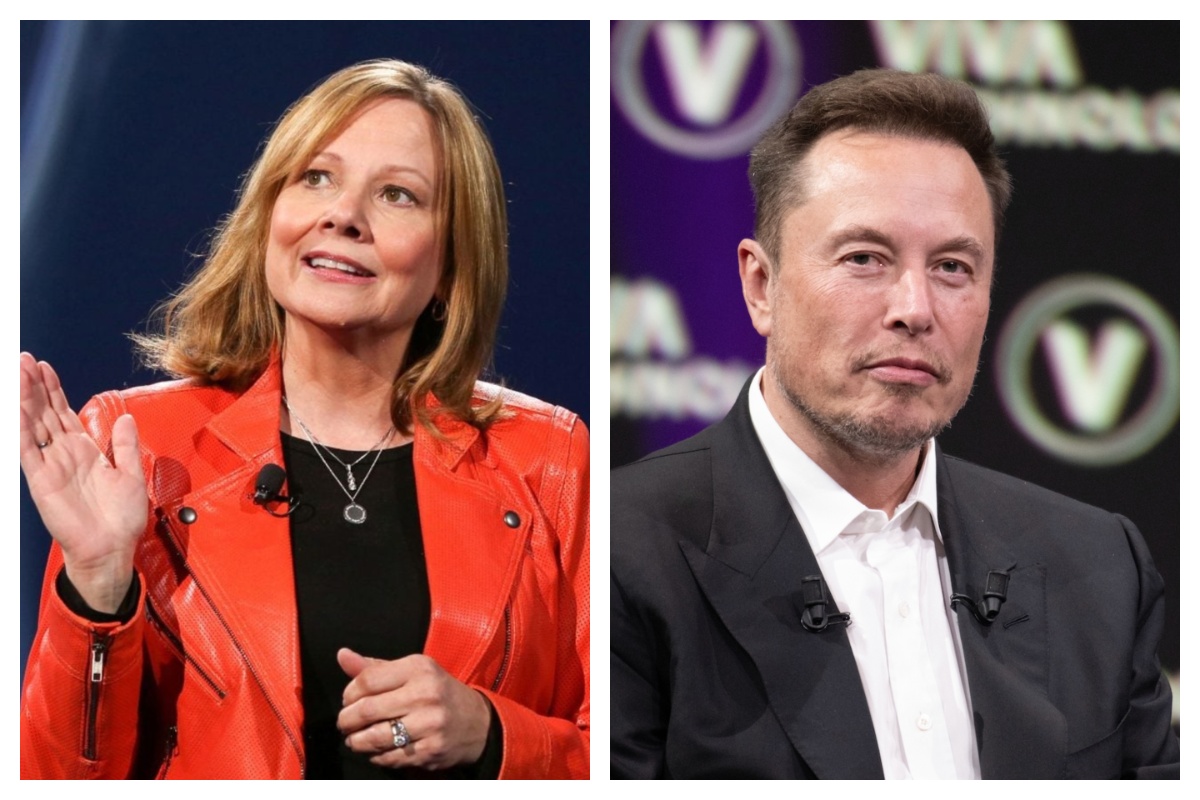
General Motors CEO Mary Barra said in a new interview on Wednesday that she told President Joe Biden to credit Tesla and its CEO, Elon Musk, for the widespread electric vehicle transition.
She said she told Biden this after the former President credited her and GM for leading EV efforts in the United States.
During an interview at the New York Times Dealbook Summit with Andrew Ross Sorkin, Barra said she told Biden that crediting her was essentially a mistake, and that Musk and Tesla should have been explicitly mentioned (via Business Insider):
“He was crediting me, and I said, ‘Actually, I think a lot of that credit goes to Elon and Tesla…You know me, Andrew. I don’t want to take credit for things.”
GM CEO Mary Barra said to Andrew Sorkin at the New York Times Dealbook Summit that she pulled President Biden aside and said Tesla CEO @elonmusk deserved the credit for EVs:
“He was crediting me, and I said, ‘Actually, I think a lot of that credit goes to Elon and Tesla,’” Barra… pic.twitter.com/OHBTG1QfbJ
— TESLARATI (@Teslarati) December 3, 2025
Back in 2021, President Biden visited GM’s “Factory Zero” plant in Detroit, which was the centerpiece of the company’s massive transition to EVs. The former President went on to discuss the EV industry, and claimed that GM and Barra were the true leaders who caused the change:
“In the auto industry, Detroit is leading the world in electric vehicles. You know how critical it is? Mary, I remember talking to you way back in January about the need for America to lead in electric vehicles. I can remember your dramatic announcement that by 2035, GM would be 100% electric. You changed the whole story, Mary. You did, Mary. You electrified the entire automotive industry. I’m serious. You led, and it matters.”
People were baffled by the President’s decision to highlight GM and Barra, and not Tesla and Musk, who truly started the transition to EVs. GM, Ford, and many other companies only followed in the footsteps of Tesla after it started to take market share from them.
Elon Musk and Tesla try to save legacy automakers from Déjà vu
Musk would eventually go on to talk about Biden’s words later on:
“They have so much power over the White House that they can exclude Tesla from an EV Summit. And, in case the first thing, in case that wasn’t enough, then you have President Biden with Mary Barra at a subsequent event, congratulating Mary for having led the EV revolution.”
In Q4 2021, which was shortly after Biden’s comments, Tesla delivered 300,000 EVs. GM delivered just 26.
News
Tesla Full Self-Driving shows confident navigation in heavy snow
So far, from what we’ve seen, snow has not been a huge issue for the most recent Full Self-Driving release. It seems to be acting confidently and handling even snow-covered roads with relative ease.

Tesla Full Self-Driving is getting its first taste of Winter weather for late 2025, as snow is starting to fall all across the United States.
The suite has been vastly improved after Tesla released v14 to many owners with capable hardware, and driving performance, along with overall behavior, has really been something to admire. This is by far the best version of FSD Tesla has ever released, and although there are a handful of regressions with each subsequent release, they are usually cleared up within a week or two.
Tesla is releasing a modified version of FSD v14 for Hardware 3 owners: here’s when
However, adverse weather conditions are something that Tesla will have to confront, as heavy rain, snow, and other interesting situations are bound to occur. In order for the vehicles to be fully autonomous, they will have to go through these scenarios safely and accurately.
One big issue I’ve had, especially in heavy rain, is that the camera vision might be obstructed, which will display messages that certain features’ performance might be degraded.
So far, from what we’ve seen, snow has not been a huge issue for the most recent Full Self-Driving release. It seems to be acting confidently and handling even snow-covered roads with relative ease:
FSD 14.1.4 snow storm Ontario Canada pic.twitter.com/jwK1dLYT0w
— Everything AI (@mrteslaspace) November 17, 2025
I found the steepest, unplowed hill in my area and tested the following:
• FSD 14.2.1 on summer tires
• FSD 14.2.1 on winter tires
• Manual drivingBut I think the most impressive part was how FSD went DOWN the hill. FSD in the snow is sublime $TSLA pic.twitter.com/YMcN7Br3PU
— Dillon Loomis (@DillonLoomis) December 2, 2025
Well.. I couldn’t let the boys have all the fun!
Threw the GoPro up and decided to FSD v14.2.1 in the snow. Roads were not compacted like the other day, a little slippery, but overall doable at lower speeds. Enjoy the video and holiday music 🎶
Liked:
Took turns super slow… pic.twitter.com/rIAIeh3Zu3— 🦋Diana🦋 (@99_Colorado) December 3, 2025
Moving into the winter months, it will be very interesting to see how FSD handles even more concerning conditions, especially with black ice, freezing rain and snow mix, and other things that happen during colder conditions.
We are excited to test it ourselves, but I am waiting for heavy snowfall to make it to Pennsylvania so I can truly push it to the limit.
News
Tesla hosts Rome Mayor for first Italian FSD Supervised road demo
The event marked the first time an Italian mayor tested the advanced driver-assistance system in person in Rome’s urban streets.
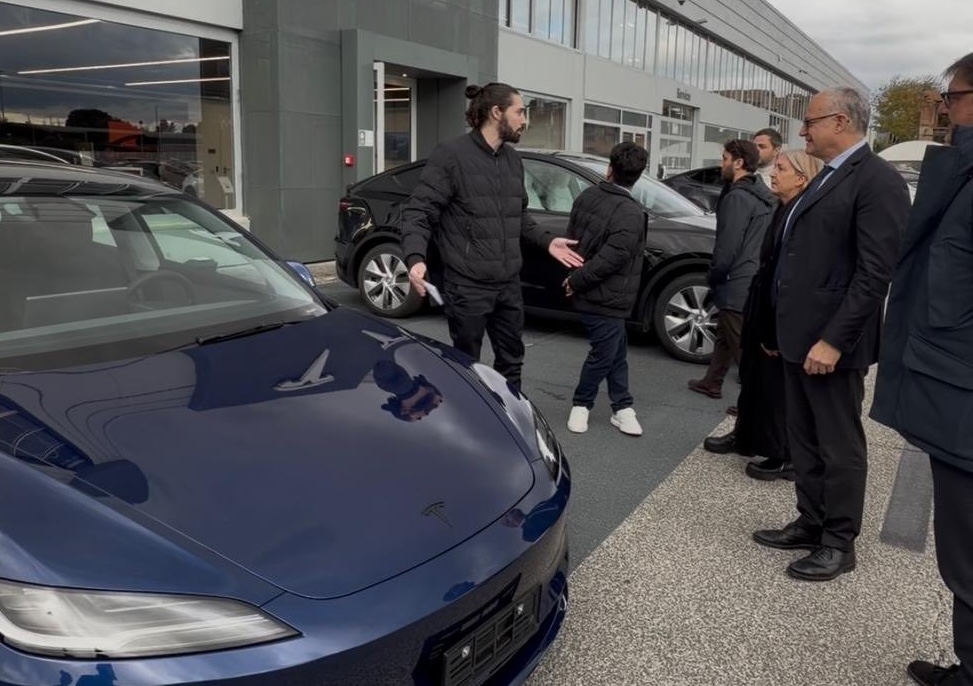
Tesla definitely seems to be actively engaging European officials on FSD’s capabilities, with the company hosting Rome Mayor Roberto Gualtieri and Mobility Assessor Eugenio Patanè for a hands-on road demonstration.
The event marked the first time an Italian mayor tested the advanced driver-assistance system in person in Rome’s urban streets. This comes amid Tesla’s push for FSD’s EU regulatory approvals in the coming year.
Rome officials experience FSD Supervised
Tesla conducted the demo using a Model 3 equipped with Full Self-Driving (Supervised), tackling typical Roman traffic including complex intersections, roundabouts, pedestrian crossings and mixed users like cars, bikes and scooters.
The system showcased AI-based assisted driving, prioritizing safety while maintaining flow. FSD also handled overtakes and lane decisions, though with constant driver supervision.
Investor Andrea Stroppa detailed the event on X, noting the system’s potential to reduce severe collision risks by up to seven times compared to traditional driving, based on Tesla’s data from billions of global fleet miles. The session highlighted FSD’s role as an assistance tool in its Supervised form, not a replacement, with the driver fully responsible at all times.
Path to European rollout
Tesla has logged over 1 million kilometers of testing across 17 European countries, including Italy, to refine FSD for local conditions. The fact that Rome officials personally tested FSD Supervised bodes well for the program’s approval, as it suggests that key individuals are closely watching Tesla’s efforts and innovations.
Assessor Patanè also highlighted the administration’s interest in technologies that boost road safety and urban travel quality, viewing them as aids for both private and public transport while respecting rules.
Replies on X urged involving Italy’s Transport Ministry to speed approvals, with one user noting, “Great idea to involve the mayor! It would be necessary to involve components of the Ministry of Transport and the government as soon as possible: it’s they who can accelerate the approval of FSD in Italy.”
